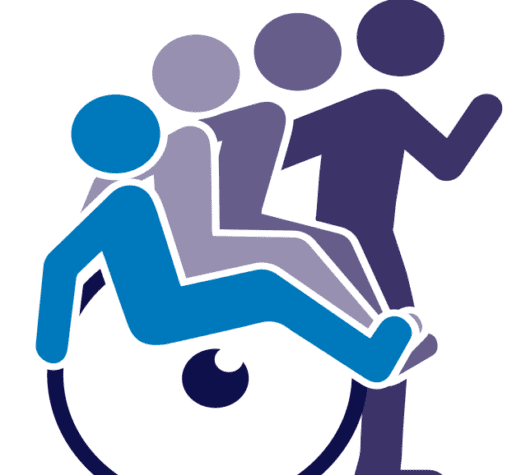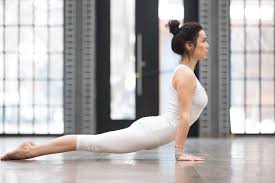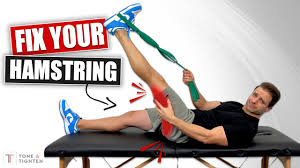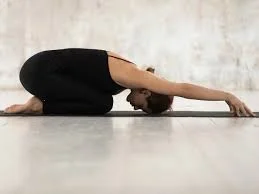Top 6 Spinal Extension Exercises for a Strong & Flexible Back
Table of Contents
Introduction:
Exercises for spinal extension assist in strengthening the muscles that support your back, enhancing spinal alignment, and mitigating the negative effects of extended sitting. You may improve your functional strength, prevent back pain, and lessen stiffness by doing these exercises regularly.
We’ll look at the Top 6 Spinal Extension Exercises in this tutorial to help you develop a strong, flexible, and pain-free back.
Benefits of Spinal Extension Exercises for a Strong & Flexible Back:
There are numerous advantages to performing spinal extension exercises regularly for your posture, range of motion, and general spine health. The muscles that support and maintain the spine—the lower back, glutes, and core—are strengthened by these workouts. Additionally, they support better spinal alignment, lessen stiffness, and increase flexibility.
Spinal extensions assist you in keeping an upright posture by activating the posterior chain, which counteracts the effects of slouching and extended sitting. They also reduce the chance of back injuries, improve circulation to the spinal tissues, and soothe pain or stress caused by muscular imbalances.
Top 6 Spinal Extension Exercises for a Strong & Flexible Back Video:
Top 6 Spinal Extension Exercises for a Strong & Flexible Back:
Prone Hip Extension:

A great exercise for strengthening the lower back, glutes, and hamstrings while also increasing spinal stability is the prone hip extension. This exercise involves lying face down on a mat with your arms at your sides and your legs straight. Keep your hips pressed into the floor and one leg straight as you slowly raise it upward. Repeat with the other leg after holding it for a few seconds at the top and lowering it again. This controlled movement is perfect for developing a stronger, more balanced back because it enhances hip mobility, engages the glute muscles, and maintains proper spinal alignment.
Superman Exercise:
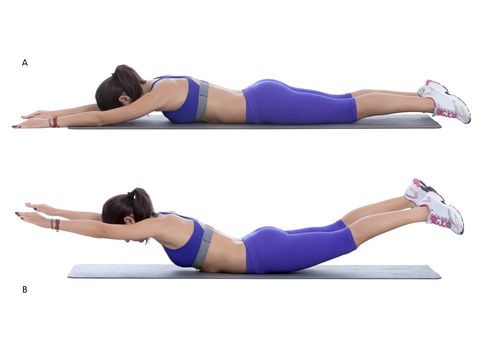
The Superman exercise strengthens and stabilizes the spine by focusing on the shoulders, glutes, and lower back. This exercise involves lying face down on a mat with your legs fully stretched out and your arms straight out in front of you. Maintaining a neutral neck, raise your arms, chest, and legs off the floor all at once.
Feel your back muscles contract as you hold the position for a few seconds, then slowly lower yourself back down. This exercise helps strengthen the posterior chain, improve posture, and lower the risk of lower back pain by simulating Superman’s flying posture.
Cobra Stretch:

A mild yet effective exercise that improves spine flexibility and eases lower back stress is the cobra stretch. This stretch is done by lying face down on a mat with your elbows close to your body and your palms beneath your shoulders.
Maintaining your hips and legs relaxed on the mat, gently press through your hands to raise your chest off the floor. Feel your spine lengthen and your chest open as you hold the stretch for a few deep breaths. This pose helps counterbalance the stiffness caused by prolonged sitting, improves posture, and enhances spinal mobility.
Bird Dog Exercise:
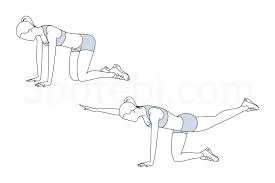
A core-strengthening exercise that enhances spinal alignment, stability, and balance is the bird dog. Start on your hands and knees in a tabletop position, placing your knees beneath your hips and your wrists beneath your shoulders, to begin the exercise. Maintaining a flat back and an engaged core, simultaneously extend your right arm forward and your left leg backward.
Hold for a few seconds, then switch sides and slowly go back to the beginning position. This controlled workout trains your body to maintain good posture and coordination while moving, strengthening your lower back, glutes, and core muscles.
Bridge Pose:
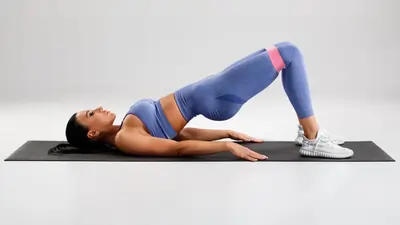
The bridge pose is a great way to increase spinal flexibility and strengthen your hamstrings, glutes, and lower back. This pose is done by lying on your back with your feet flat on the floor, hip-width apart, and your knees bent.
Press through your heels and use your glutes and core as you slowly raise your hips toward the ceiling. After a few seconds of holding the pose, slowly return your hips to the mat. This exercise improves posture, eases lower back tension from extended sitting, and stabilizes the spine.
Standing Back Extensions:

A straightforward yet powerful technique to combat the negative consequences of slouching and extended sitting is to perform standing back extensions. Stand tall, place your hands on your lower back for support, and place your feet shoulder-width apart to begin this exercise.
With your knees slightly bent and your chest raised, gently arch your upper body backward. After a few seconds of holding the stretch, stand back up. This exercise is great for providing rapid relief from long periods of standing or sitting since it helps reduce lower back stress, enhance posture, and develop spinal flexibility.
Conclusion:
One of the finest methods to develop a back that is strong, flexible, and pain-free is to include spinal extension exercises in your daily regimen. These exercises enhance posture, mobility, and general body alignment in addition to strengthening the muscles that support your spine.
Exercises like the Superman, Bird Dog, and Bridge Pose can have a big impact on your back health, regardless of whether you spend a lot of time sitting down or you just want to improve it. Regular practice and conscious movement are essential for a stronger, healthier spine.
FAQs
A controlled back-arching movement called a spinal extension exercise helps to increase the strength and flexibility of the muscles along the spine, especially the lumbar area. A back extension machine can be used to hinge at the hips and arch the back to a straight line, or it can be used to lift the upper body while resting on the stomach (similar to the “Superman” or “cobra pose”). By lessening the strain on the spine, these exercises can help reduce lower back pain, strengthen the core, enhance posture, and stop further back problems.
Include dynamic stretches like Cat-Cow, Child’s Pose, and Cobra Pose in your regular practice to improve the flexibility of your spine. Additionally beneficial are forward bends, knee-to-chest stretches, and spinal twists. To strengthen and stretch the spine and enhance general flexibility and posture, take into account yoga, physical therapy, and frequent exercise.
The classic strength training split is push, pull, legs. It means striking the upper pulling and pushing muscles, followed by the lower body muscles. It’s well-liked since it’s the minimum required to work all of the body’s main muscles, which is just what we want.
Bicycle crunches
According to the study, the bicycle crunch is the best exercise for analyzing abdominal muscle activity, ranking first on the charts.
Although it should never be your main exercise, the lower back extension is a good addition to your back or lower body day when you want to mix things up a bit or are trying to target your glutes and lower back in particular.
Stretch your left leg behind you and raise your right arm in front of you without letting your pelvis sink. After ten seconds of holding this position, lower your arm and leg and repeat the exercise with the other arm and leg. Perform this motion ten times on each side.
Sleeping on your back
Your lower back’s curve may be preserved, and your back muscles may become more relaxed as a result. Try placing a small, rolled towel beneath your waist if you require more support.
It can take anywhere from two to three weeks of regular stretching to several months to see substantial improvements in flexibility. Depending on personal circumstances and level of commitment, noticeable progress can occasionally take several months.
We squat more frequently than any other movement in our daily lives, in my opinion. No other exercise is as sophisticated or fundamental as the squat, making it the king or queen of movements.
Your spine is under additional strain when you lean over your computer or sit on the edge of your chair, which can lead to pain and stiffness. An hour of sitting can result in the development of spine stiffness, which can be made worse by a sedentary lifestyle. Sit up straight to prevent stiffness in your back.
The erector spinae
Because of this high injury rate and the days of lost productivity that follow, back pain prevention and strengthening are crucial for overall health and fitness. The erector spinae and other smaller back-stabilizing muscles are worked with the back extension exercise.
Exercises that involve stretching the back muscles and lengthening the spine to relieve tension and enhance alignment include Child’s Pose, Knee-to-Chest, Cat-Cow, and the Lying Spinal Extension. By gradually decompressing the vertebrae, these exercises enhance posture and flexibility; nonetheless, it’s crucial to do them within a pain-free range.
The McGill Big 3 might appear to be easy exercises at first. Don’t be deceived, though; they are powerful. The modified curl-up, side plank, and bird dog are the three exercises. Every exercise focuses on different back and core muscles, which helps to increase stability and lessen pain.
The 90-degree back extension is ideal for strengthening the lower back and optimizing glute hypertrophy. The 45-degree back extension is ideal if you want to strengthen your lower and mid back while also opening up your hamstrings.
Core stabilizers such as the bird dog, bridge, plank, and side plank are used in L4/L5 strengthening exercises to help stabilize the spine. While back extensions (like the cobra position) strengthen the back muscles, gentle movements like the cat-camel stretch and pelvic tilt increase spinal mobility and relieve pain. The lower back is also supported when tight hamstrings are stretched using a hip hinge stretch. Before beginning a new back pain workout regimen, always get advice from a physician or physical therapist.
Regularly engage in core strengthening and flexibility exercises, such as bridge position, bow pose, cat-cow stretch, and pelvic tilts, to develop a strong and flexible back. To ensure a comprehensive approach to back health, combine strength-building activities like leg lifts and abdominal contractions with regular, daily stretching to increase mobility. To promote healing and enhance overall outcomes, pay attention to your body, refrain from exerting yourself excessively, and eat a balanced diet.
Prone Press-Ups (lying on your stomach and pushing your upper body up) and Standing Extensions (putting your hands on your lower back and leaning backward) are two popular options for spinal extension exercises, which include bending backward to strengthen back muscles and increase flexibility. Additional exercises include the Superman exercise, which uses the back muscles to raise the chest and legs off the ground, and Cobra Pose, which is comparable to a press-up but emphasizes maintaining the hips on the ground. Always go cautiously, stay away from pain, and stop if you experience any pain.
References:
- Cronkleton, E. (2025j, August 1). 12 Spinal decompression exercises for all skill levels. Healthline. https://www.healthline.com/health/spinal-decompression-exercises
- Cadman, B. (2025g, April 14). How to strengthen the lower back. https://www.medicalnewstoday.com/articles/323204
- Strengthen your spine: 6 exercises for improved health and mobility. (n.d.-b). https://www.swasthyasaarthi.com/blog/strengthen-your-spine-6-exercises-for-improved-health-and-mobility
- Sinha, R. R. (2023b, June 29). Top 10 back-strengthening exercises. @Medanta. https://www.medanta.org/patient-education-blog/top-10-back-strengthening-exercises
- Shetty, S. M. (2025b, March 31). Best exercises for a strong and healthy spine – Ishaan Ortho and Spine Clinic Bangalore. Welcome to Ishaan Ortho and Spine Clinic Bangalore. https://ishaanorthospine.in/best-exercises-for-a-strong-and-healthy-spine/
